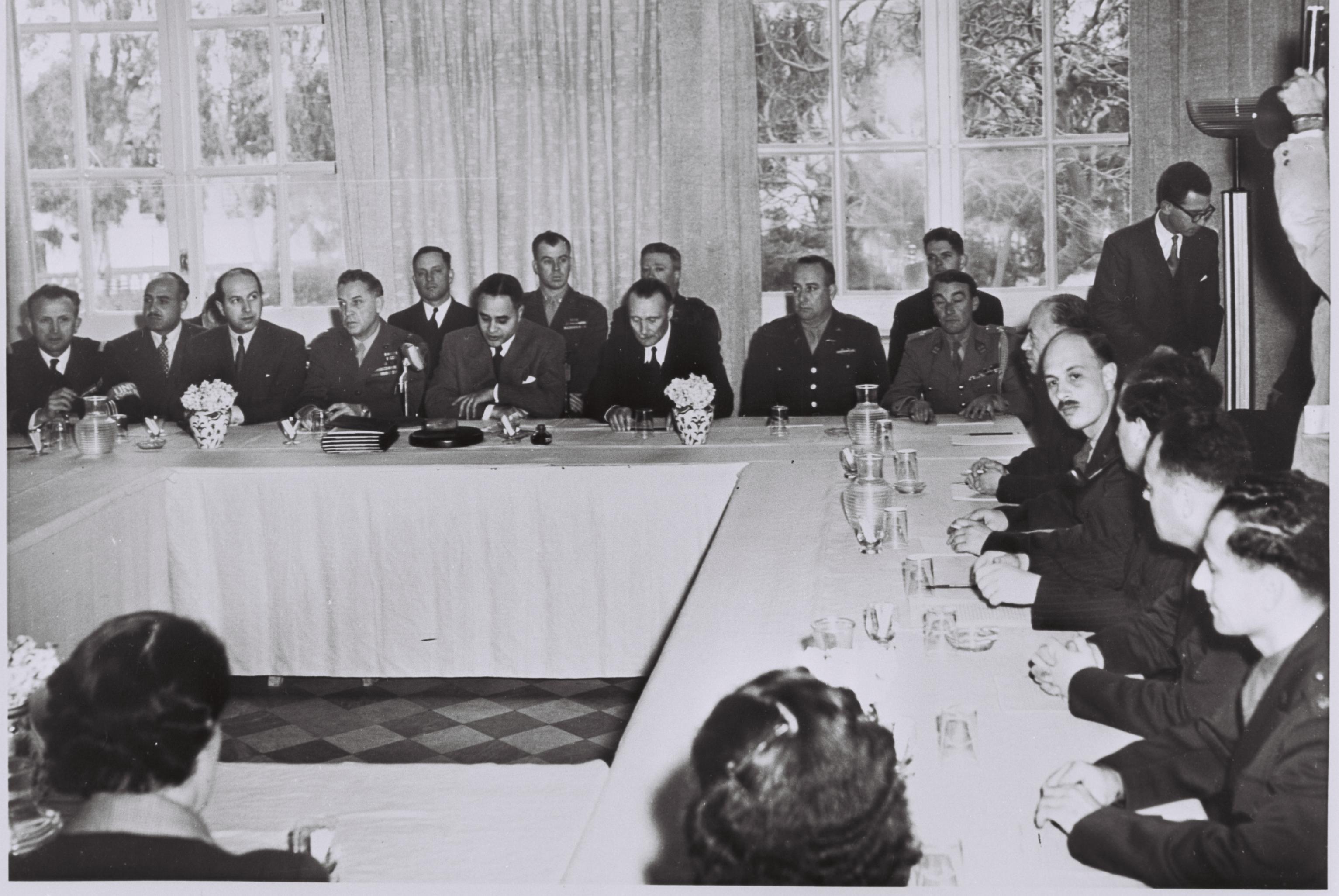The Armisice Talks 1949

Armistice talks were held between Israel and Egypt, Lebanon, Jordan and Syria. Agreements were slowly reached with all of them.
On January 13, 1949, armistice talks between Israel and Egypt commenced on the Greek island of Rhodes, mediated by Ralph Bunche, who succeeded Count Bernadotte. Representing Israel were: Walter Eytan, the Director-General of the Ministry of Foreign Affairs; IDF Chief of Operations Yigael Yadin; and his aides, including Yitzhak Rabin, the Southern Front’s operations officer. The Egyptian delegation was led by Colonel Muhammad Seif el Dine and Abd al-Mungim Mustapha, a Foreign Ministry official.
As the talks began, Israel appeared to hold all the cards. Israeli troops had recently defeated the Egyptians and controlled strategic positions, posing a threat to the Egyptian forces. In their initial proposals, the Israelis demanded that Egypt withdraw all its troops from what was then Palestine, including the Gaza Strip and Gaza City. The Egyptians, on the other hand, demanded the withdrawal of Israeli forces from Beersheva and other locations in the Negev.
After six weeks of tough negotiations, each side made concessions, and it was ultimately agreed that the border between Israel and Egypt would follow the 1906 border between Egypt and the Ottomans, with the exception of Gaza, which Egypt would retain. The agreement also allowed the Egyptians in the Faluja gap to keep all their equipment. The agreement was signed on February 24, 1949.
Following the agreement with Egypt, talks commenced near Rosh Hanikra between Israel and Lebanon. These talks lasted three weeks and resulted in Israel withdrawing from a small strip of land to the international border.
The talks with Jordan were lengthy and complex. Jordan was keen to sign an agreement, knowing that by the end of the war their troops were no match for IDF forces, and if they did not concede to most of Israel’s demands, Israel would take the territories by force. On April 3rd, the two sides signed an agreement in Rhodes. The sides agreed to maintain limited troops on both sides of the border. The Jordanians ceded territory that was 2-3 miles wide from just southwest of Qalqilya northward to Wadi Ara and then toward Jenin. Issues around Jerusalem, such as access to the Wailing Wall and Mt. Scopus, were deferred to a later committee, one that never reached any agreement.
The final talks were held with Syria and concluded on July 20, 1949. Under the terms of the agreement: "The Syrians withdrew back to the international frontier, and the areas evacuated became demilitarized zones (DMZs). Local Jewish police administered the Jewish-inhabited areas (Mishmar Hayarden, Ein-Gev), and local Arab policemen administered the Arab-inhabited areas (Kirad al-Baqqara).”
Regrettably, none of these accords were peace agreements but merely documents to cease the fighting and recognize the current borders.
 >
>